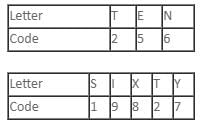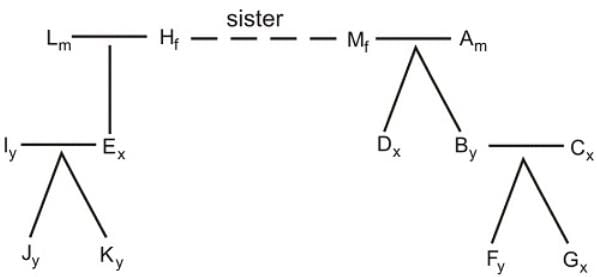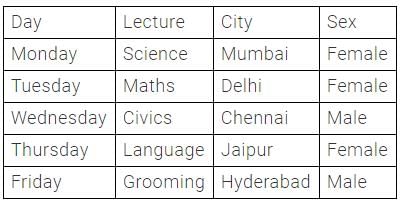Indian Navy Tradesman Mate Mock Test - 10 - Indian Navy Tradesman Mate MCQ
30 Questions MCQ Test Indian Navy Tradesman Mate Mock Test Series 2025 - Indian Navy Tradesman Mate Mock Test - 10
Instructions (Q1 to Q10): In each of the following questions two statements are given and these statements are followed by two conclusions numbered (1) and (2). You have to take the given two statements to be true even if they seem to be at variance from commonly known facts. Read the conclusions and then decide which of the given conclusions logically follows from the two given statements, disregarding commonly known facts.
Statements:
Some actors are singers.
All the singers are dancers.
Conclusions:
1. Some actors are dancers.
2. No singer is actor.
Some actors are singers.
All the singers are dancers.
1. Some actors are dancers.
2. No singer is actor.
Statements:
All the harmoniums are instruments.
All the instruments are flutes.
Conclusions:
(1) All the flutes are instruments.
(2) All the harmoniums are flutes.
All the harmoniums are instruments.
All the instruments are flutes.
(1) All the flutes are instruments.
(2) All the harmoniums are flutes.
Statements:
Some mangoes are yellow.
Some tixo are mangoes.
Conclusions:
(1) Some mangoes are green.
(2) Tixo is a yellow.
Some mangoes are yellow.
Some tixo are mangoes.
(1) Some mangoes are green.
(2) Tixo is a yellow.
Statements:
Some ants are parrots.
All the parrots are apples.
Conclusions:
1. All the apples are parrots.
2. Some ants are apples.
Directions: Study the following information to answer the given question.
Five Women Madhu, Kanchan, Chandni, Sheela and Rekha are married to Doctor, Naval Officer, Lawyer, Sales Manager and Engineer. The ladies are Accountant, Teacher and Doctor by Profession, while two are Housewives.
(i) One husband and Wife have the same profession.
(ii) Madhu and Kanchan are neither Housewives nor they are married to Doctor or Lawyer.
(iii) Sheela and Rekha are neither Teacher nor Accountant and their Husbands are neither the Engineer nor are in a Navy.
(iv) The Sales Manager is not Madhu’s or Chandni’s husband. His Wife is an Accountant.
(v) Rekha is not a doctor
(Vi) Chandni is not a Teacher and the Teacher’s husband is Naval officer.
Q. Who among the following is engaged in Doctor’s Profession with her husband?
Directions: Study the following information to answer the given question.
Five Women Madhu, Kanchan, Chandni, Sheela and Rekha are married to Doctor, Naval Officer, Lawyer, Sales Manager and Engineer. The ladies are Accountant, Teacher and Doctor by Profession, while two are Housewives.
(i) One husband and Wife have the same profession.
(ii) Madhu and Kanchan are neither Housewives nor they are married to Doctor or Lawyer.
(iii) Sheela and Rekha are neither Teacher nor Accountant and their Husbands are neither the Engineer nor are in a Navy.
(iv) The Sales Manager is not Madhu’s or Chandni’s husband. His Wife is an Accountant.
(v) Rekha is not a doctor
(Vi) Chandni is not a Teacher and the Teacher’s husband is Naval officer.
Q. Which of the following pair is the correct match of husband –wife?
Directions: Study the following information to answer the given question.
Five Women Madhu, Kanchan, Chandni, Sheela and Rekha are married to Doctor, Naval Officer, Lawyer, Sales Manager and Engineer. The ladies are Accountant, Teacher and Doctor by Profession, while two are Housewives.
(i) One husband and Wife have the same profession.
(ii) Madhu and Kanchan are neither Housewives nor they are married to Doctor or Lawyer.
(iii) Sheela and Rekha are neither Teacher nor Accountant and their Husbands are neither the Engineer nor are in a Navy.
(iv) The Sales Manager is not Madhu’s or Chandni’s husband. His Wife is an Accountant.
(v) Rekha is not a doctor
(Vi) Chandni is not a Teacher and the Teacher’s husband is Naval officer.
Q. Who among the followings are Housewives?
Directions: Study the following information to answer the given question.
Five Women Madhu, Kanchan, Chandni, Sheela and Rekha are married to Doctor, Naval Officer, Lawyer, Sales Manager and Engineer. The ladies are Accountant, Teacher and Doctor by Profession, while two are Housewives.
(i) One husband and Wife have the same profession.
(ii) Madhu and Kanchan are neither Housewives nor they are married to Doctor or Lawyer.
(iii) Sheela and Rekha are neither Teacher nor Accountant and their Husbands are neither the Engineer nor are in a Navy.
(iv) The Sales Manager is not Madhu’s or Chandni’s husband. His Wife is an Accountant.
(v) Rekha is not a doctor
(Vi) Chandni is not a Teacher and the Teacher’s husband is Naval officer.
Q. Who is the wife of Engineer?
In 2003, there are 28 days in February and 365 days in a year. In 2004, there are 29 days in February and 366 days in the year. If March 11, 2003 is a Tuesday, then March 11, 2004 would be which of the following days?
How much does a watch gain or lose per day if its hands coincide every 62 minutes?
If today is Wednesday, then what will be the day after 94 days?
If the 1st of March of a year is a Wednesday, then which of the following months of the same year will start with the same day?
In a certain coding system, 'TEN' is coded as 256 and 'SIXTY' is coded as 19827. How will you code 'SIXTEEN' in this coding system?
If 'orange' is called 'butter', 'butter' is called 'soap', 'soap' is called 'ink', 'ink' is called 'honey' and 'honey' is called 'orange', then which of the following is used for washing clothes?
In a certain coding system, 'PAGES' is coded as 23719 and 'GUEST' is coded as 75196. How will you code 'STAGE' in this coding system?
Directions: Answer the given question based on the following information.
The consonants of the English alphabet have been coded using digits 1 to 8 and the vowels have been coded using different digits or symbols.

If a vowel is not at the beginning or at the end, it is to be coded as 6.
If a vowel is at the beginning or at the end, it is to be coded as 9.
However, if the same vowel is placed both at the beginning and at the end, it is to be coded as '$' at both the places.
Q. Choose the correct coded form of the following letter group.
EGTARLQE
Directions: Read the information given below to answer the question.
Rani and Shreshtha are a married couple having two daughters, Medha and Deepti. Deepti is married to Anurag, who is the son of Garima and Tarun. Nidhi is the daughter of Anurag. Komal, who is Anurag's sister, is married to Harshit and has two sons, Aman and Prem. Prem is the grandson of Garima and Tarun.
Q. What is the relation between Aman and Nidhi?
Directions: Read the following information carefully and answer the question that follows.
In a village of Bastar district in Madhya Pradesh, only two types of people live who belong to a tribal class. The first type is known as class A, while the other is known as class B. In that village, there is no other type of person except these two. The activities of both types of people are governed by perfectly patterned norms of social behaviour. Each person of the tribe has to obey the norms. They are rigid about this.
As far as marriage is concerned, the following norms are to be followed:
(A) The people of class A cannot marry any other member of their own class, though they can marry members of class B.
(B) After being married, each male member ceases to be member of that class in which he was born, but automatically he becomes the member of the other class to which his wife belongs.
(C) As far as females are concerned, they remain the members of their own class after being married.
(D) On its birth, the child automatically becomes the member of its mother's class.
(E) When any male member becomes widower or divorcee, then he again belongs to the group in which he was born.
(F) Nobody can marry more than one person according to social laws.
Q. A boy who was born in class B (boy and his wife both can have married and unmarried brothers) can have
Directions: Read the following information carefully and answer the question that follows.
In a village of Bastar district in Madhya Pradesh, only two types of people live who belong to a tribal class. The first type is known as class A, while the other is known as class B. In that village, there is no other type of person except these two. The activities of both types of people are governed by perfectly patterned norms of social behaviour. Each person of the tribe has to obey the norms. They are rigid about this.
As far as marriage is concerned, the following norms are to be followed:
(A) The people of class A cannot marry any other member of their own class, though they can marry members of class B.
(B) After being married, each male member ceases to be member of that class in which he was born, but automatically he becomes the member of the other class to which his wife belongs.
(C) As far as females are concerned, they remain the members of their own class after being married.
(D) On its birth, the child automatically becomes the member of its mother's class.
(E) When any male member becomes widower or divorcee, then he again belongs to the group in which he was born.
(F) Nobody can marry more than one person according to social laws.
Any female of class B can have
(P) grandfather (father's father) born in class B
(Q) grandmother (father's mother) born in class B
Directions: Study the information given below and answer the question that follows.
A is the father of two children, B and D, who are of different sexes.
C is B's spouse.
E is of the same sex as D.
B and C have two children: F, who is of the same sex as B and G, who is of the same sex as C.
E's mother H, who is married to L, is the sister of D's mother, M.
E and E's spouse, I, have two children J and K, who are of the same sex as I.
No person has married more than once, and no children have been born out of wedlock.
The only restriction on marriage is that marriage to a sibling, to a direct descendant, or to more than one person at the same time is forbidden.
Q. According to the rules, D can marry
Directions: In the following question assuming the given statements to be True, find which of the conclusion among given conclusions is/are definitely true and then give your answers accordingly.
Statements:
A > B, B > C, C = D, D < E
Conclusions:
I. B = D
II. B > D
In the following question assuming the given statements to be true, find which of the conclusion among given conclusions is/are definitely true and then give your answer accordingly.
Statements:
L > F = S < T ≤ Q < P
Conclusions:
I. F < Q
II. L > S
III. T < P
In the following question assuming the given statements to be True, find which of the conclusion among given conclusions is/are definitely true and then give your answers accordingly.
Statement:
P > S ≥ M = L < J = N
Conclusions:
I. L < N
II. P > M
III. S = L
In the following question, assuming the given statements to be true, find which of the following among the given conclusions is/are definitely true and then give your answers accordingly.
Statement:
S = U > K > L ≥ Y < R ≤ B
Conclusion:
I. K < Y
II. L > Y
III. L = Y
Direction: Study the following information and answer the questions that follow:
Five guest lecturers have to be scheduled for students starting from Monday and ending on Friday of the same week. The topics of lectures are maths, science, language, civics, and grooming, not necessarily in the same order. The experts for lectures belong to Hyderabad, Chennai, Mumbai, Delhi, and Jaipur, not necessarily in the same order. Three guest lecturers are females and two are males.
The males will take lectures on alternate days and won't be available on Monday. The expert who belongs to Delhi is a female and is free only on Tuesday. The Civics lecture needs to be scheduled on Wednesday. Neither grooming nor maths can be scheduled for Monday. The language lecture should be scheduled after civics. The grooming expert belongs to Hyderabad. The expert of science neither belongs to Chennai, nor to Jaipur. A female expert belongs to Jaipur.
Q.
The Civics lecture was delivered by an expert from which of the following day?
In a company, the salary of a person is directly proportional to his experience. The salary of a fresher is Rs. 20,000 per month and the salary of a person who has an experience of 2 years is Rs. 50,000.
If the company follows the methodology, what will be the salary of a person who has an experience of 5 years?
The number of fruits purchased by Ms. Paul is given by the following two equations, where a, b and c are the number of apples, bananas and oranges, respectively:
3a - 4b + 2c = 0
4a - 2b - c = 0
Which of the following represents the ratio of the numbers of apples, bananas and oranges purchased by Ms. Paul?
In a regular week, there are 5 working days and for each day, the working hours are 8. A man gets Rs. 2.40 per hour for regular work and Rs. 3.20 per hours for overtime. If he earns Rs. 432 in 4 weeks, then how many hours does he work for ?
Free notebooks were distributed equally among children of a class. The number of notebooks each child got was one-eighth of the number of children. Had the number of children been half, each child would have got 16 notebooks. Total how many notebooks were distributed ?
If x = 2 is a root of the quadratic equation 3x2 – px – 2 = 0, then the value of ‘p’ is


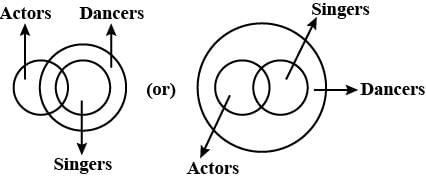
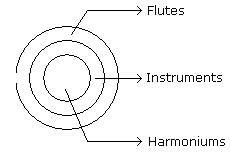

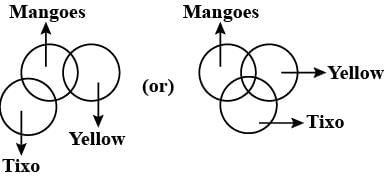
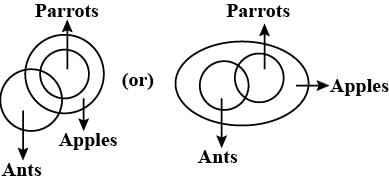
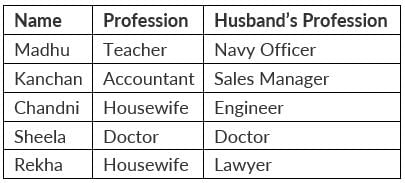
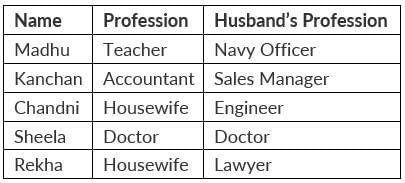
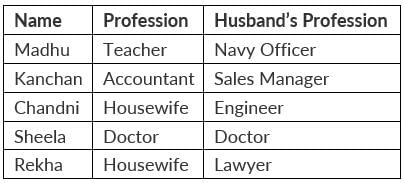
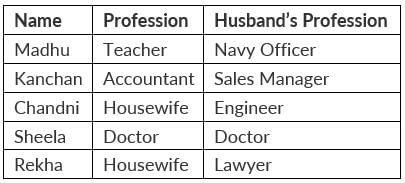
 where hands coincide after x minutes
where hands coincide after x minutes = 80.23
= 80.23